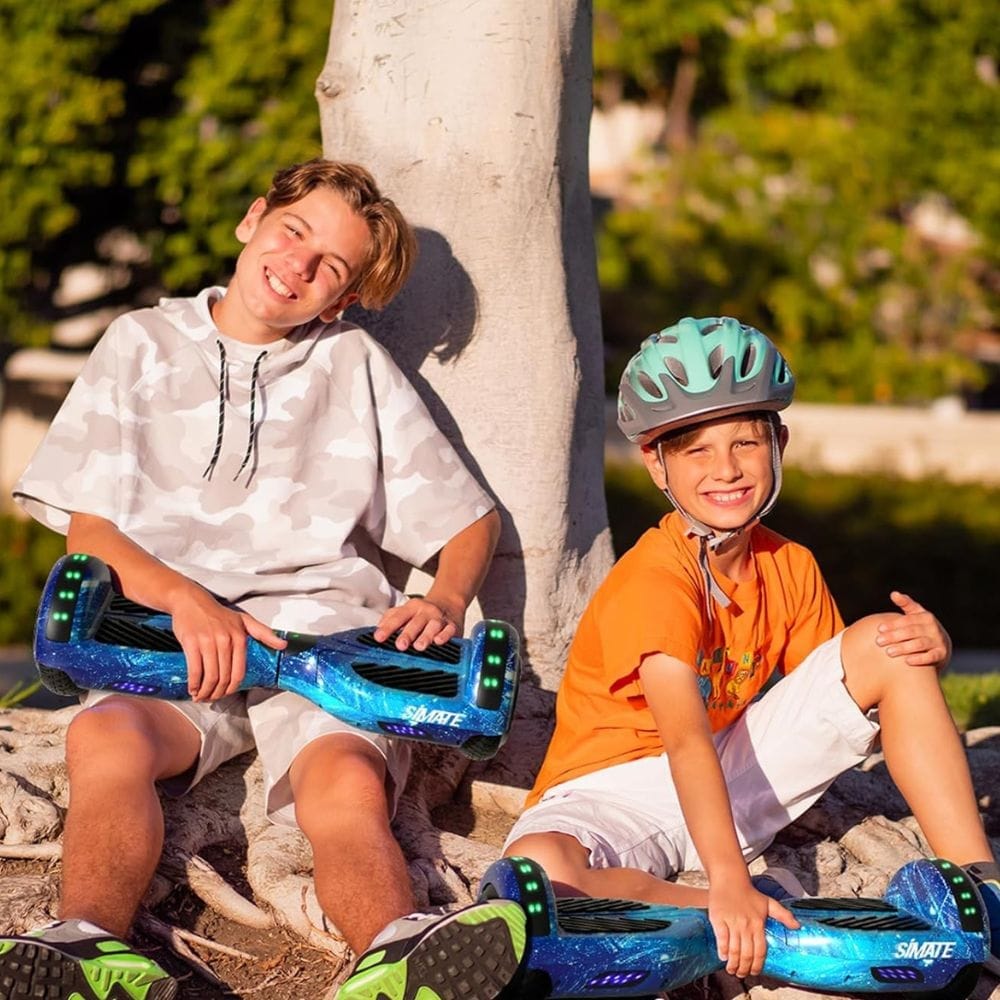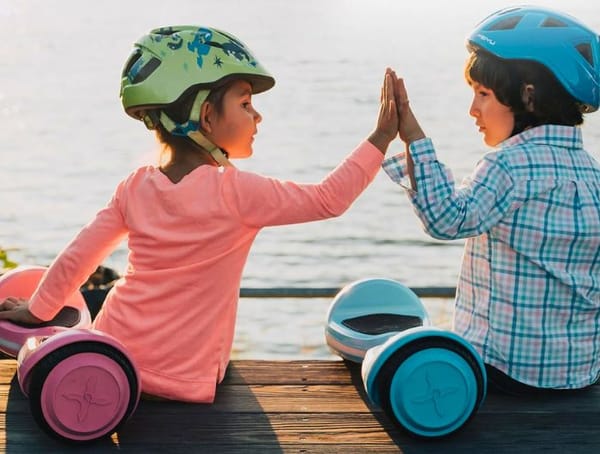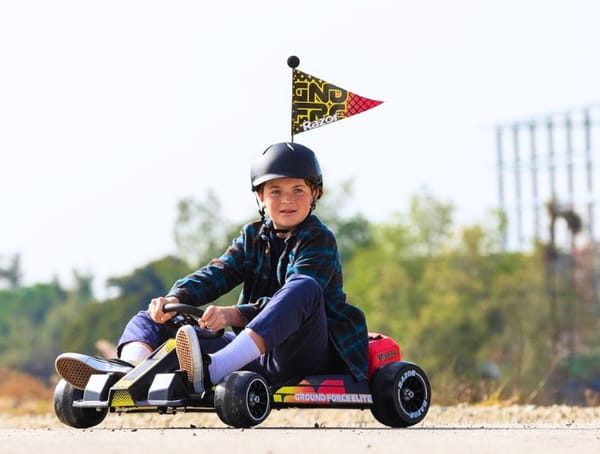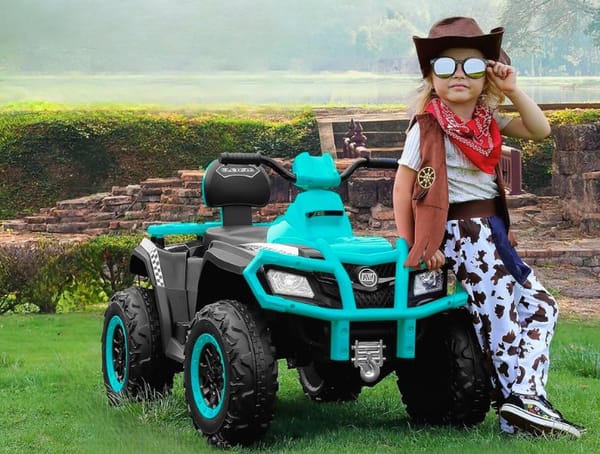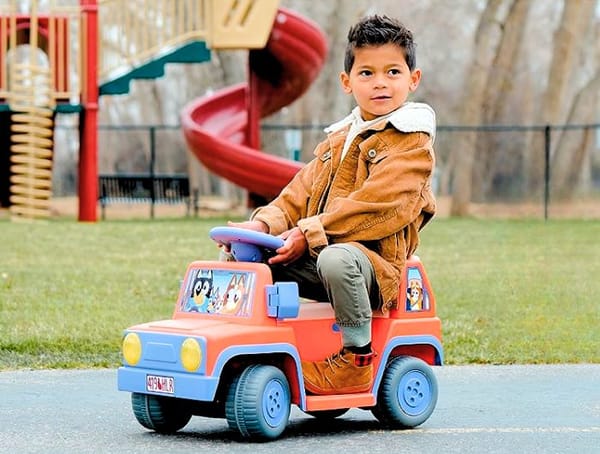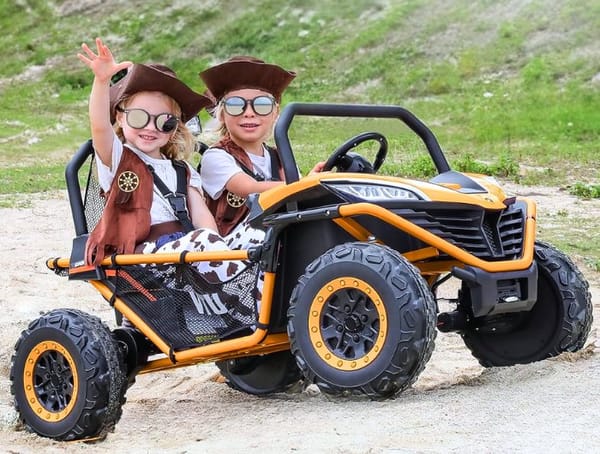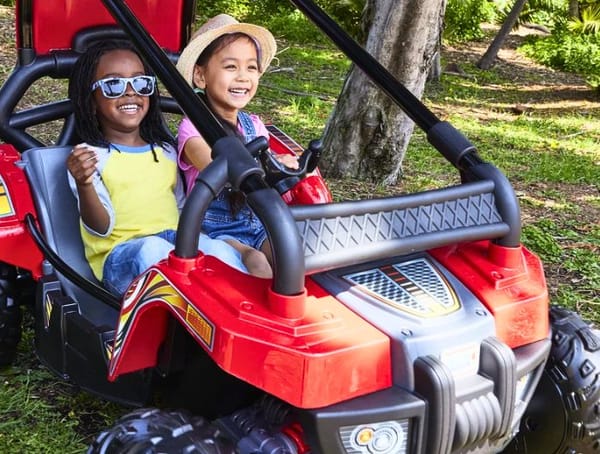Hoverboards have taken kids’ excitement to the next level. These self-balancing scooters are not only incredibly fun but also offer a cool way to learn balance and coordination. For parents, though, the idea of their child stepping onto a hoverboard for the first time might spark a mix of emotions—curiosity, excitement, and maybe a little concern for safety.
Hoverboards can be a safe and enjoyable activity with the right protective gear, preparation, safety tips, and guidance. Here’s a guide to help your child learn how to ride a hoverboard with confidence and safety.
Choosing the Right Hoverboard
The first step in your hoverboarding adventure starts with picking a quality hoverboard. Not all hoverboards are created equal, and opting for a safe hoverboard ensures a smoother, more secure experience for your child from the get-go.
What Parents Should Look For
- UL Certification: Check for certifications like UL 2272 to ensure that the battery and components are tested for safety.
- Weight Limit: Verify that your child is within the hoverboard’s recommended weight range for better control.
- Wheel Size: Smaller wheels work best for beginners, while larger wheels handle off-road terrain well.
- Additional Features: Many hoverboards include features like LED lights and Bluetooth speakers, which kids love. While fun, prioritize functionality over flashiness.
Investing in the right hoverboard gives your child greater safety and helps them master hoverboarding faster.
Gear Up with Safety in Mind
Hoverboards can reach speeds of up to 10 mph, which is why safety gear is a must. Wrist guards, knee pads, elbow pads, and a secure helmet can make all the difference between a minor scrape and a potential injury.
Must-Have Safety Gear
- Wear a Helmet: A well-fitted, supportive helmet is non-negotiable.
- Protective Pads: Have them wear knee pads, elbow pads, and wrist guards to cushion falls.
- Good Shoes: Sturdy, closed-toe shoes with grip give more control over the hoverboard. Avoid sandals or flip-flops.
- Comfortable Clothes: Long pants prevent scrapes from an unexpected wobble.
Taking these precautions lets you watch your child explore hoverboarding safely and confidently.
Step-by-Step Guide to Ride a Hoverboard
1. Start Slow in a Safe Space
Begin in a flat, open area free from uneven pavement or obstacles. A quiet driveway or park is ideal for practicing.
2. Step Onto the Hoverboard for the First Time
Teach your child to follow these steps, one at a time, for balance and stability:
- Place one foot on the hoverboard, making sure it feels stable.
- Keep their body centered and gently lift their other foot onto the board.
- Stand straight, keeping knees slightly bent to absorb small movements.
3. Maintain Balance
Once both feet are on the hoverboard, maintaining balance is key. Encourage your child to shift their weight gradually and avoid rapid movements. If they feel a wobble, have them focus on keeping their knees slightly bent and back straight.
4. Lean Forward to Move
To start moving forward, your child should lean forward slightly—just enough to signal the hoverboard. To stop, they can simply stop leaning forward and straighten their posture. Reverse is just as simple—encourage them to lean back gently to slow down or move backward.
5. Turning the Hoverboard
Turning takes practice but is simple with the right teaching tips.
- For a left turn, press down on your right toes and shift your weight to the direction your want to turn.
- For a sharper turn, adjust your weight further. Remember to keep movements smooth to avoid losing balance.
6. Dismount Carefully
It’s important to teach your child how to step off the hoverboard safely. Remind them to step off one foot at a time, and always step backward rather than forward to avoid tipping over.
Pro Tips for Learning how to Ride a Hoverboard Properly
Hoverboarding is a new skill, and like any new skill, it takes time to master the basics. These pro tips can help your child get the hang of it faster and enjoy the process even more.
- Start Riding Slowly: Hoverboards can feel fast at first, even at low speeds. Take your time to build confidence.
- Keep Movements Smooth: Jerky weight shifts can lead to sudden stops or falls.
- Stay on Smooth Surfaces: Avoid bumpy roads or grass until they’re comfortable balancing and steering.
- Hoverboard is Fully Charged: A fully charged hoverboard ensures smoother control and avoids mid-ride power snags.
- Supervise Beginners: Keep a close watch until your child becomes more independent on the hoverboard.
Why Hoverboard Riding Matters
Learning to ride a hoverboard properly isn’t just about mastering a fun gadget; it’s also an opportunity for kids to learn balance, coordination, and persistence. Watching your child go from hesitant to confident is incredibly rewarding.
Plus, it’s an activity the whole family can enjoy! You might even find yourself wanting to hop on a hoverboard and race your kids.
Final Thoughts
Teaching your child how to ride a hoverboard can become a fun, bonding experience. Start with the right safety gear, a good quality hoverboard, and plenty of patience. Take things step-by-step and encourage your child to practice gently and frequently—soon enough, they’ll be gliding with ease.
With safety, proper guidance, and a little practice, hoverboarding can offer hours of enjoyment and provide valuable lessons in balance, control, and determination. Grab your child’s hoverboard, head outside to an open space, and begin this exciting ride together!
Thank you for reading Mother Bear Reviews, your favorite parenting blog!


